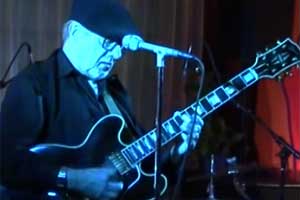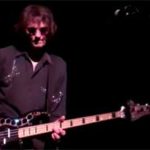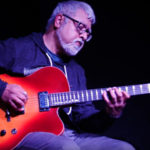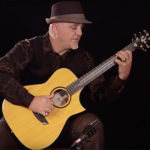Music keeps Motown Funk Brother on Cloud Nine
By Gary Graff
January 13, 2017
Dennis Coffey is not a household name like others who worked at Motown, but he’s as much a part of the label’s fabric as anyone else who set foot inside Hitsville USA. Joining Motown’s elite Funk Brothers studio band during the late mid-60s, Coffey played a key role in songs by the Temptations, the Four Tops, Marvin Gaye, Diana Ross & the Supremes, Stevie Wonder, Edwin Starr, the Spinners and Undisputed Truth, among others. Outside of Motown he had his own Top 10 hit — 1971’s gold-certified instrumental “Scorpio” — and worked for artists such as Quincy Jones, Ringo Starr, Tom Jones, Parliament-Funkadelic and Barbra Streisand. Coffey, along with producer Mike Theodore, discovered singer-songwriter Sixto Rodriguez, subject of the Academy Award-winning Searching For Sugar Man documentary, and played on Rodriguez’s debut, Cold Fact.
After a hiatus from music to work in the auto industry — during which he published his 2004 memoir Guitars, Bars, and Motown Superstars — Coffey returned to music full-time in 2006 and released a new album, Dennis Coffey, five years later. This week sees the release of Hot Coffey in the D: Burnin’ at Morey Baker’s Showplace Lounge, a 1968 set of live, heavily improvised funk and jazz in Detroit with fellow Motor City stalwarts Lyman Woodard on keyboards and Melvin Davis on drums. Coffey still plays a weekly show on Tuesday nights in Detroit, and at 76 he’s still in top form, with no signs of slowing down.
FGPO: You are the quintessential “unsung hero,” but it seems like over time you and the others who were in the background at Motown have gotten your due.
Coffey: It was pretty common knowledge that Motown didn’t put the names of the musicians on their albums. But I kinda got through the pack with “Scorpio,” so I had a year of touring and getting out there and doing The Mike Douglas Show and American Bandstand. I was probably the first white artist on Soul Train, where I played [“Scorpio”] with my band twice. So I had at least gotten out of the crowd and gotten some recognition through my own albums. But, yeah, for the most part people say: “We had no idea we played on all those hits. We knew you played at Motown, but not on all that.”
FGPO: Was being a solo artist something you set out to do, or did it just come your way?
Coffey: Believe it or not that was always my goal. I did my first record date — “I’m Gone” by Vince Gallon. You can actually find that and hear it on YouTube where I’m taking a couple guitar solos when I’m 15 years old. So, yeah, I always wanted to do my own thing and really just fell into the session thing and Motown.
FGPO: How did you start playing guitar in the first place?
Coffey: I had two cousins, Jim and Marilyn Thompson. They lived up in Copper City [Michigan], up in the Upper Peninsula. I used to go up there in the summertime for a couple of weeks. They were playing acoustic guitars and singing country-western songs. I just got interested in it and they showed me a few chords and got me started. And when I came back home I took some lessons but at the end of the day rock ‘n’ roll was just beginning and none of the teachers knew how to play that stuff, so you really had to just buy the records and spend the time learning off the record, which could be very tedious when you’re starting out.
FGPO: What was your path into Motown?
Coffey: That was interesting because I’d already done hits with the Volumes and Del Shannon in New York and the Golden Tones and Golden World. I was playing with Edwin Starr and J.J. Barnes. So I already had a track record. Then one day I got a phone call from James Jamerson at Motown, and he introduced me to Hank Cosby, who was Stevie’s [Wonder] producer and the contractor over there. Hank told me that by that time Motown had purchased Golden World and that upstairs at Golden World Studios they were going to have a producer’s workshop, four nights a week — I think it was 7 to 9:30 at night — and they were going to give producers a chance to experiment and take more time to develop ideas. After three or four weeks, one of those producers who came in there was Norman Whitfield, and he was the Temptations’ producer. And he brought in this arrangement for the song “Cloud Nine.”
FGPO: That’s one of your signature pieces as a Funk Brother. How did you approach the song?
Coffey: I looked at the intro figure and I had this wah-wah pedal in my kit. So I used that on the introduction figure to “Cloud Nine” and Norman heard that and said: “That’s what I’m looking for!” So within two weeks I was at Hitsville playing with the Funk Brothers and doing “Cloud Nine” with the Tempts and then I just never left. I was there all the time after that — Norman made sure of it.
FGPO: Were you pretty readily accepted by the rest of the Funk Brothers and Motown crew?
Coffey: It’s funny; I was doing a segment for public television, American Black Journal, once and the floor director came over to me and said: “I was the tambourine player on ‘Cloud Nine’ at Motown — it wasn’t Jack Ashford — and he said: “You should’ve seen the look on the Funk Brothers’ faces when you started playing that wah-wah figure…it was hilarious!” [laughs] But they always treated me great over there ’cause we were all friends. We used to socialize together and play different gigs, and I had already known half of the Funk Brothers from different gigs.
FGPO: What was a work day like at Motown?
Coffey: We would come into Studio A at 10 or 11 in the morning and we’d sit down in front of a sheet of music. Usually the producer and arranger were there; It could be Norman Whitfield or maybe Paul Riser or David Van De Pitte, and they would have the charts. We had to do one song an hour — that was it. You didn’t have too much time to horse around too much because that’s what the standard was in the business, including Motown, because it was union scale for every three hours. If you went over three hours to get your three or four songs you went into time and a half. So our job was to do one song an hour, so we did three songs every three hours, took an hour for lunch at Howard Johnson’s, came back and did another three hours. So we did six songs a day, five days a week. That’s 30 songs just at Motown every week.
FGPO: Those arrangements always sound so tight and slick. How much room was there for the musicians to put their stamp on the songs?
Coffey: We called the charts road maps. They’d be, like, the master rhythm chart, ’cause they’d have all the parts on them. Then we’d read the charts, run ’em down and try to get a good feel to it and then come up with some interesting intros — in my case, or Eddie Willis and I would try to make up little fills and stuff. We got very good at doing fill-ins on the offbeat so we didn’t cover up the singers, and noodling lines that weren’t too invasive, that weren’t on the one beat so they’d interfere with the vocals. We were always noodling little funk lines that were always on the offbeat. So we got to do little stuff like that and put our flavor to it.
FGPO: Norman Whitfield had a particular affinity for your playing and what you brought to the Temptations’ records in particular. How did that develop?
Coffey: What I liked about Norman is every time I’d come in there I’d have this bag of tricks, if you want to call it that, special effects, and he’d say: “What do you have today?” and “Show me this” and “Show me that.” So, like, the introduction on “Ball Of Confusion,” I’m doing that with a Fuzztone and an echoplex. “Psychedelic Shack,” all that stuff, the wah-wah stuff. I did the solo on “Smiling Faces Sometimes,” [with] the Undisputed Truth, using a Condor unit with a bassy kind of guitar harpsichord sound on the solo. It went the gamut from “Cloud Nine” all the way up to just a regular introduction on “Just My Imagination,” that little guitar figure at the beginning. [Whitfield] was open to all of it.
FGPO: Do you have particular favorite songs or moments from the Motown days?
Coffey: I remember when we did the Spinners’ “It’s A Shame;” Stevie Wonder produced that and Stevie was kind of singing the drum part to Uriel Jones and Pistol Allen, the two Motown drummers, and they were trying to play it and they got very frustrated. And then finally they just stopped and said: “Stevie, we don’t hear that. We don’t know what you’re talking about,” and they handed him the drum sticks and Stevie sat down and played the drums for that song.
FGPO: The Hot Coffey In The D… album is a cool look at what you were doing outside of Motown and a totally different side of your playing. What do you remember about those gigs?
Coffey: I think I had my greatest development as a player and artist when I started playing with those guys. There was a real sense of freedom there. I had been in Top 40 bands with dancers and stuff, and now people were actually sitting and listening to what you were playing. The money wasn’t much, but I didn’t care. It was just a great way for me to develop as an artist. I was using feedback and stuff. We just played and let them go wherever it felt right, never the same way twice. You can hear that on the whole CD; it’s just organic, just get up and play and not feel too tied to any arrangement. It was very different from whatever we were all doing in the studio during sessions.
FGPO: You put out a new album back in 2011. Are we going to get another one?
Coffey: Yeah, I think so. I’ve got 20 originals sitting here until I need ’em. Right now I’m letting them sit until we get this [Hot Coffey] album out and see how it goes. I’m always ready and willing to work; I just want it to be at the right time.






